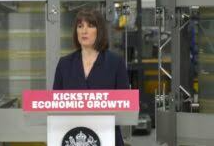Reeves Champions New Infrastructure Project to Ease Congestion and Boost Connectivity Between Kent and Essex
In a significant address on Wednesday, Chancellor Rachel Reeves announced strong government support for the £9billion Lower Thames Crossing, a new road project connecting Kent and Essex. Speaking at a major event in Oxfordshire, Ms Reeves outlined the government’s commitment to collaborating with the private sector to bring this 14.3-mile motorway-style road, which includes a tunnel under the Thames, to life. If realised, it would become the UK’s longest tunnel of its kind, aiming to reduce the severe congestion experienced at the Dartford Tunnel.
The Lower Thames Crossing has been in the works since 2009, with £800m already spent. A final planning decision is expected in May. Ms Reeves emphasised the importance of the project in easing traffic at key ports like Dover, Felixstowe, and Harwich, essential for trade across the UK. She also highlighted the project’s role in alleviating congestion for goods travelling to overseas markets from the North and Midlands.
The Chancellor confirmed that ministers would explore private financing options to help fund the project and ensure value for taxpayers. Once complete, the crossing could nearly double the road capacity across the Thames east of London.
While the announcement has been welcomed by some, including Labour MP for Dartford, Jim Dickson, who described it as a solution to Dartford Crossing’s gridlock, the project faces opposition. Environmental groups and local councils, notably Thurrock Council in Essex, have raised concerns over the potential environmental impact and the disruption to local landscapes.
In addition to the Lower Thames Crossing, Ms Reeves also reaffirmed support for a third runway at Heathrow and unveiled plans for a major infrastructure initiative between Oxford and Cambridge. The ambitious vision for this Oxford-Cambridge arc includes improved transport links, new housing, and the construction of reservoirs, aimed at fostering economic growth. The Treasury anticipates the project could contribute up to £78bn to the UK economy by 2035.

